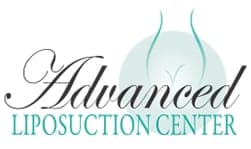Ear Lobe Repair
Are you Earring Impaired?
If your earlobe was torn from an earring, gauge or other injury, you’ll be relieved to know that this can easily and quickly be repaired as an inoffice procedure. Ear lobe stretching, also known as “gauging”, has become a trendy form of body modification for both men and women. This technique involves wearing plugs or “gauges” in the earlobes and gradually increasing the size of the earlobe hole until it becomes as large as a half an inch in diameter or more. But like most fashion trends, ear lobe stretching will go out of style sooner or later. Not to mention the fact that the dalliances of youth often turn ugly when you’re in your 40s and everything starts to sag. Who wants ears with huge, gaping holes that swing while you walk?

The Solution
“I had a scarf around my neck, and when I pulled it off, my earring caught on it. Now my ear lobe is ripped, but not all the way through. What should I do?”
“I’ve been wearing heavy earrings for years, and now I’m paying the price. My earring holes have stretched so much that my earrings won’t stay in. Can this problem be fixed so that I can wear jewelry again?”
There are a variety of procedures that can repair a stretched or torn earlobe. The procedure entails a small pieces of skin and being removed, then precisely repairing the edges by sewing them back together giving you the best shape and contour. This procedure can be performed by Dr. Giraldo, M.D, under 30 minutes. There is minimal discomfort, and healing time takes approximately one week. Scarring from the procedure will usually fade in the following weeks and months, and when fully healed, a scar will barely be noticeable. Also, the earlobe can be repierced again in 6-8 weeks.
A gauged hole can sometimes close on its own, but there are various factors, including age, genetics, and the size of the hole that might warrant surgical reconstruction of the ear lobe. Recovery time is about the same as with other earlobe repairs.
Repairing an earlobe is a simple, nearly pain free, in office procedure. Dr. Giraldo, M.D., will begin by numbing the patient with a local anesthetic. There are multiple techniques when repairing an earlobe depending on each individual’s case.
Dr. Giraldo uses a scalpel to make a clean, smooth incision at a 90 degree right angle, or a zigzag shape trimming the excess skin if needed. The inside of the ear will be scored with the scalpel and sewn shut with stitches on the front and back. The patient’s ear will be bandaged following the surgery.
Frequently Asked Questions
My ears look like I have two small earlobes, can this be combined to one earlobe?
Whether your earlobe sustained a trauma during childhood or one of your children tugged on your ear, this can easily be repaired as an in-office procedure under local anesthesia. Who is a candidate for earlobe reconstruction surgery?
You may be a candidate for earlobe repair if you:
- Wore heavy earrings for a long period of time and may have “split” the earlobe.
- Have deformities or abnormal shape earlobes.
- Wore “plugs” or “stretched” (gauged) their earring holes.
- Have damaged their earlobes in result from an injury.
How much does it cost?
It depends if your surgery is unilateral or bilateral. Some people may require additional reconstructive surgery which may cost more. We offer a discount if you have both ears done at the same time (bilateral). Check out our menu/price page for details or call to schedule a complimentary consultation.
Is the procedure painful?
Earlobe repair is done under local anesthesia. You will not feel anything during the surgery. Following, your ear may feel warm or swollen. You may experience bruising one week after. This is normal and can be covered up with makeup to make it less noticeable during the healing process.
How long does the earlobe repair take?
Every patient’s surgery is going to be customized based on the individual’s issue. Typically the surgery can be done in under 1 hour.
What type of aftercare is needed?
You will be given post-operative care instructions designed specifically for your procedure. You will be given a prescription for antibiotics to reduce the risk of infection and possibly a pain medication to ease the discomfort of the healing process. Use Vitamin C for one week following the surgery as well to help boost the immune system. You may also use Vitamin E on the scar to reduce the appearance of the scar. We also have resurfacing laser treatments to eliminate scarring.
When can I resume normal daily activities?
You can resume your daily routine the day following the surgery. Avoid working out or physical activity for one week. Also avoid heavy lifting, bending over or straining. This will help decrease the risk of additional swelling and prolonged healing time.
Can I re-pierce my ear after?
You can pierce your ear again 6-8 weeks following the surgery. This will ensure the earlobe is completely healed to prevent future damage. Avoid heavy earrings and trauma to the ear.
Will there be any scarring?
Scarring is very minimal with earlobe repair. The scar will look like a tiny line, which will be barely noticeable. Ask about our Scar Removal Laser during your consultation.
How long does an earlobe repair surgery typically take?
Earlobe repair surgery typically takes about 30 minutes to 1 hour, although the exact duration can vary depending on the complexity of the repair and the specific technique used. Simple repairs, such as closing a single earlobe piercing hole, may take less time, while more intricate repairs involving multiple tears or deformities could require a longer surgical procedure. The surgeon will assess the extent of the damage during the consultation and provide an estimate of the expected surgical time. It’s important to follow post-operative care instructions carefully to promote proper healing and minimize the risk of complications after the procedure.
Is Ear Lobe Repair Painful?
Earlobe repair is a minor procedure, so despite being an invasive treatment there’s not a lot of discomfort, it’s quite mild. But local anesthesia will be used during the surgery since you can still feel pain and having a surgery like this is something people aren’t used to, so it can be both scary and painful at the same time. After the procedure is done, you can expect some tenderness, swelling and soreness as the area starts healing. However, if you experience pain and can’t handle it, you can still rely on over-the-counter pain relievers! Discomfort will be minimal and short-lived, especially if you have done an excellent self care.
What’s The Recovery Time After Earlobe Repair?
The recovery period after an ear lobe repair can take about one to two weeks for the initial healing, but it can also take months. The stitches just like every other surgery will be removed within a few weeks and if there’s any swelling, or redness, it will go away soon! Once your initial healing period has started, it’s important to focus on aftercare, such as keeping the area clean, not touching or irritating the ear, avoiding smoking and following rest of the instructions by your doctor. Lastly, normal activities will resumed within a day Or two, but you need to take a long break from strenuous ones especially if they come in contact with your earlobe.
Is Earlobe Repair A Permanent Solution?
Yes, fortunately it’s a permanent solution! Especially when it’s done by a qualified surgeon, since the procedure is all about removing the scar tissue stitching the earlobe back together and allowing it to heal. Once your ear has healed fully, the tissue will stay intact, but further stretching, injury, heavy earrings or trauma can cause damage to earlobe again, that’s why it’s important to make sure you keep it safe.
How long should one wait before re-piercing the ears after repair?
The timing for re-piercing the ears after earlobe repair surgery can vary depending on several factors, including the surgeon’s recommendation, the extent of the repair, and the individual’s healing process. In general, here are some guidelines:
- Consult with Your Surgeon: It’s crucial to consult with the surgeon who performed the earlobe repair. They will provide personalized guidance based on your specific case.
- Healing Time: Typically, you should wait at least 6 to 8 weeks or longer for the earlobe to fully heal after repair surgery. The exact time may vary, so it’s essential to follow your surgeon’s advice.
- Assess Healing Progress: The surgeon will assess the healing progress during follow-up appointments. They will determine when it’s safe to re-pierce the ears based on the appearance and strength of the repaired earlobe.
- Consider Re-piercing Technique: When you do re-pierce your ears, consider using a different technique or location to avoid the area that was repaired. This can help prevent a recurrence of the issue.
- Careful Aftercare: After re-piercing, follow strict aftercare instructions to minimize the risk of complications or damage to the repaired area.
Call 724-683-7581 for more information and to schedule a consultation for earlobe repair.
